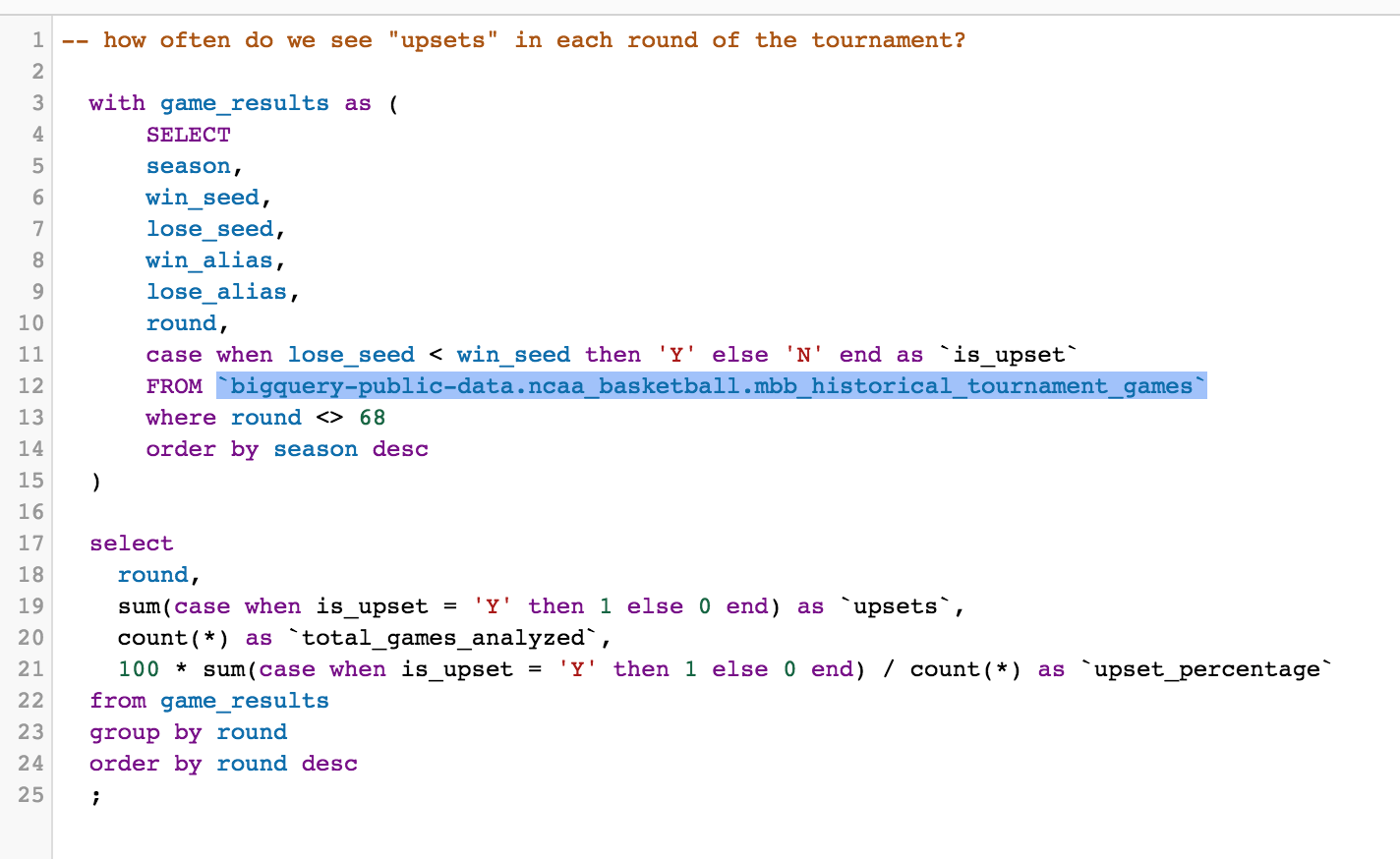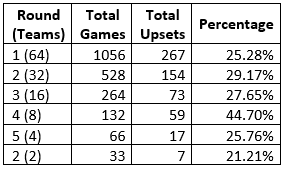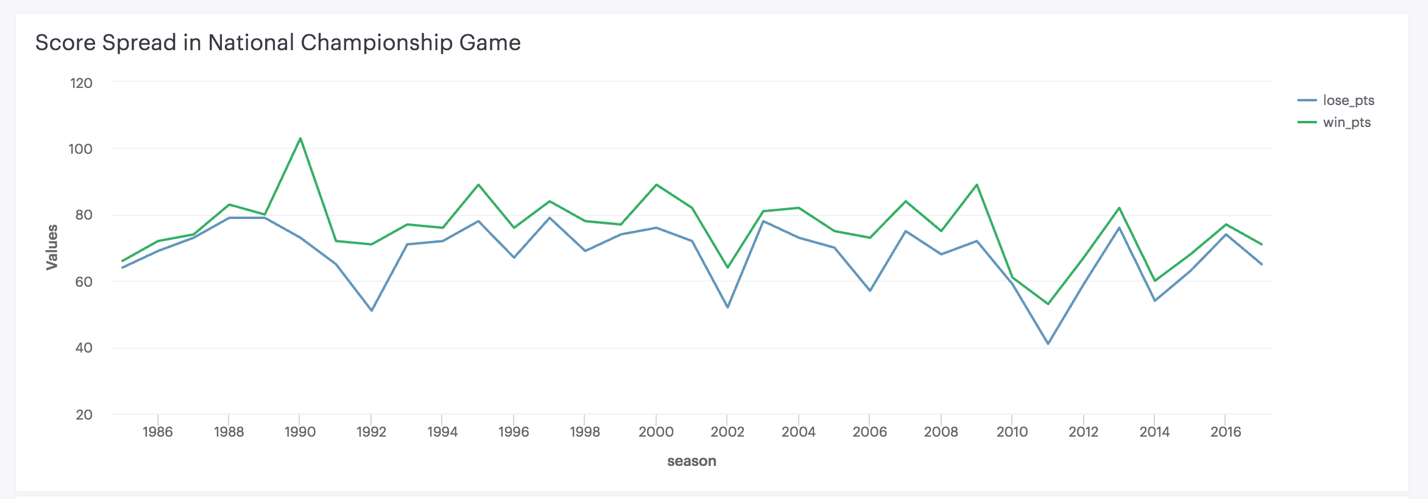
March Madness
The Data Behind The Chalk
Every March, people around the world meticulously fill out a bracket for the NCAA’s National Championship Tournament, or March Madness as it’s more popularly known, in the hopes of picking a perfect combination of teams to win their pool. But the never-ending search for a perfect bracket is a fool’s errand. Much like running from a bear, you don’t need to be perfect, you just need to be better than your competition.
There’s an old joke among hikers: If a bear attacks your group, you don’t need to outrun the bear, you just need to outrun your slowest friend. However morbid, the lesson is a valuable one – you don’t always need to be perfect, just better than your competition.
But what if your competition is actively sabotaging itself without realizing it? To continue the bear example, how would you react if one friend decides to run in the opposite direction of the bear? What if one friend doesn’t run at all, instead betting that a wild badger is going to fend off the bear?
It’s a strange analogy for sure, but it also encapsulates something millions of people struggle with every year – filling out their March Madness bracket.
Every March, people around the world meticulously fill out a bracket for the NCAA’s National Championship Tournament, or March Madness as it’s more popularly known, in the hopes of picking a perfect combination of teams to win their pool. But the never-ending search for a perfect bracket is a fool’s errand. Much like running from a bear, you don’t need to be perfect, you just need to be better than your competition.
THE KEY TO MARCH MADNESS ISN’T PICKING THE MOST UPSETS BUT INSTEAD MAKING A FEW STRATEGIC PICKS THAT GIVE YOU AN EDGE WHILE MINIMIZING MISTAKES.
Some people make their picks based on team colors or mascots and do quite well. But, if you really want to win your pool using data analytics is the best way to strategize.
THE ANALYSIS
Not all correct picks are created equal. In a standard bracket, correct picks are worth 1 point in the first round, scaling up to 32 points for picking the winner. To emphasize – a perfect first round, which is very rare, is worth the same amount as simply picking the winning team. This means it’s much more important to be correct in the Elite 8 and on than it is to pick upsets early. Unless you think a low seed has a real shot at advancing to the Final Four, the best bracket strategy is to go favorites early with a few strategic upsets in the later rounds. And it’s backed up by data.
Using Google’s BigQuery data warehouse, we analyzed every single Tournament game from 1985 through 2017.

Here’s what we found:

The big takeaway here is that through the first three rounds of the Tournament, the favorite wins an average of 72.63% of the time. That’s a significant number. Every year the big upsets get all the press, but far more often than not the board is chalk. Don’t get distracted by those juicy 12 Seeds in the first round!
THE PICKS
Our strategy is clear– pick favorites early and often and wait until the Elite 8 to start strategically picking upsets.
Our strategy is clear then –For the first three rounds, we’re going to play the odds and only pick favorites – we have a near 73% chance to win after all.
Starting with the Elite 8, we’ll get strategic. Make picks here based on a combination of personal and expert knowledge, but when in doubt the favorite wins out.
Finally, this season all the attention has been on Duke forward and future NBA 1st Overall Pick Zion Williamson, and as a result, a lot of people will be picking Duke to win it all. Our opportunity lies in predicting a Duke loss somewhere starting in the Elite 8. If we’re wrong we’ll lose, but if we’re right we’ll probably win.
We have one last pick to make – the final score that’s used for bracket tiebreakers. Using the same data set, we see that the average score of the championship game is 76-68. There’s not much science to this, but it’s valuable to note that the final game is rarely a blowout:

And now we’re good to go! We have our general strategy (favorites) our big upset (Duke) and our final score (close) locked in. All we have to do is outrun a few friends.
THE CAVEATS
This is obviously a fairly shallow analysis in terms of data analytics. There are hundreds of ways we could further slice the data – average scoring in regular vs post-season games, team winning streaks, data since the NBA instituted the “One and Done” rule – the possibilities are endless. Our goal was simply to explore the data with easily accessible tools that anyone could use to get an edge. Finally, technology and processing power only take you so far – you still need to be able to articulate questions about the problem. And sometimes, the gut play is the best play.